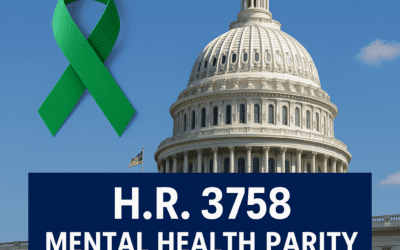A recent U.S. Supreme Court ruling involving patent law may revive procedural challenges to the means by which Employee Retirement Income Security Act (ERISA) cases are adjudicated. In Kappos v. Hyatt, 2012 U.S.LEXIS 3107 (U.S.S.Ct. April 18, 2012), the Supreme Court examined a provision of the Patent Act of 1952 enabling a patent applicant whose claims are denied to either file a direct appeal to the U.S. Court of Appeals for the Federal Circuit or, pursuant to 35 U.S.C. § 145, bring a civil action against the director of the Patent and Trademark Office (PTO) in federal district court.
The question before the Supreme Court had to do with the nature of that Section 145 civil action right along with the scope of adjudication. While a direct appeal to the circuit was deemed a typical agency review matter, a Section 145 civil action was found to be entitled to trial proceedings limited only by the Federal Rules of Evidence and the Federal Rules of Civil Procedure with no deference accorded to the administrative finding.
Section 145 of the act grants a patent applicant whose claims are denied a “remedy by civil action against the director.” The court noted that “[b]y its terms, Section 145 neither imposes unique evidentiary limits in district court proceedings nor establishes a heightened standard of review for factual findings by the PTO.” The PTO director argued the statute should be read in light of “traditional principles of administrative law,” mandating a review proceeding that defers to the PTO’s findings. The Supreme Court disagreed since Section 145 requires the district court to serve as a fact finder which “must make its own findings de novo” rather than act as a “reviewing court” as envisioned by the Administrative Procedures Act, 5 U. S. C. § 706. In addition, the Supreme Court also found the civil action permitted by Section 145 did not permit the court to remand to the PTO to consider new evidence. Instead, the trial court could consider evidence not submitted to the PTO even if it was readily available during the PTO proceeding. The court did, however, rule that the availability of the evidence during the proceedings before the PTO could be considered in deciding what weight to give such evidence.
The implication of this ruling to ERISA cases is apparent. The Supreme Court has repeatedly ruled that ERISA must be read strictly in accordance with its statutory language and courts are not to read additional requirements into the statute. Most recently, in Hardt v. Reliance Standard Life Ins.Co., 130 S. Ct. 2149 (2010), the Supreme Court reiterated that principle in overturning the incorporation of a prevailing party standard in ERISA’s fee statute (29 U.S.C. § 1132(g)) when no such language is contained in the statutory text.
Like Section 145 of the Patent Act, nowhere in the ERISA statute is there any language that limits the “civil action” authorized by 29 U.S.C. § 1132(a) to a more narrow adjudication than what is otherwise permitted under the Federal Rules of Civil Procedure and Evidence. Nor does the ERISA statute authorize remands to private insurers.
Kapposis entirely consistent with earlier Supreme Court rulings involving different statutes. For example, Chandler v. Roudebush, 425 U.S. 840 (1976), which involved discrimination claims brought under Section 717(c) of the Civil Rights Act, resolved a circuit split as to whether federal employees’ civil rights claims were review proceedings by holding such civil actions require full trial proceedings. The court explained, “Nothing in the legislative history indicates that the federal-sector ‘civil action’ was to have this chameleon-like character, providing fragmentary de novo consideration of discrimination claims where ‘appropriate,’ ibid., and otherwise providing record review.” 425 U.S. at 861. Since the statute itself contained no language implicating an administrative law framework for litigation, the court strictly construed the statutory language to preclude the imposition of a review proceeding. 425 U.S. at 862 n.37.
Similarly, in United States v. First City National Bank, 386 U.S. 361, 368 (1967), which construed the nature of the civil action permitted by the Bank Merger Act of 1966, 12 U.S.C. § 1828(c)(7)(A) and (B), found that although the statute provided courts are to “review de novo the issues presented,” the court still determined that despite the statute’s use of the word “review,” a trial was necessary.
Consistent with those rulings, the only guidance as to the nature of the civil action afforded by 29 U.S.C. § 1132(a) is contained in ERISA’s legislative history, which simply remarked that ERISA actions “are to be regarded as arising under the laws of the United States in similar fashion to those brought under Section 301 of the Labor-Management Relations Act of 1947.” H.R. Conf. Rep. 93-1280, 93d Cong., 2d Sess. 327 (1974).
Such actions are deemed plenary and even encompass jury trials according to Chauffeurs, Teamsters & Helpers, Local No. 391 v. Terry, 494 U.S. 558 (1990).However, in Firestone Tire v. Bruch, 489 U.S. 101 (1989), the court chose to apply trust law to ERISA claims and permitted a deferential standard of review, thus triggering the lower courts’ use of review proceedings to determine whether the benefit plan administrator abused its discretion in denying benefits based on the evidence presented.
Nonetheless, according to the Federal Rules of Civil Procedure, which apply to all civil actions (Rule 1), along with Rule 2’s statement defining only one form of civil action, ERISA litigation conducted as an administrative review proceeding under the de novo standard and arguably under the abuse of discretion standard as well contravenes Federal Rule of Civil Procedure 43(a), which states, “At trial, the witnesses’ testimony must be taken in open court unless a federal statute, the Federal Rules of Evidence, these rules, or other rules adopted by the Supreme Court provide otherwise.” Since neither the ERISA statute itself, the Federal Rules of Evidence, nor the Federal Rules of Civil Procedure make an exception for civil actions authorized by ERISA, consistent with the holding and rationale applied in Kappos, it may be time to reassess the entire regime of ERISA litigation.






